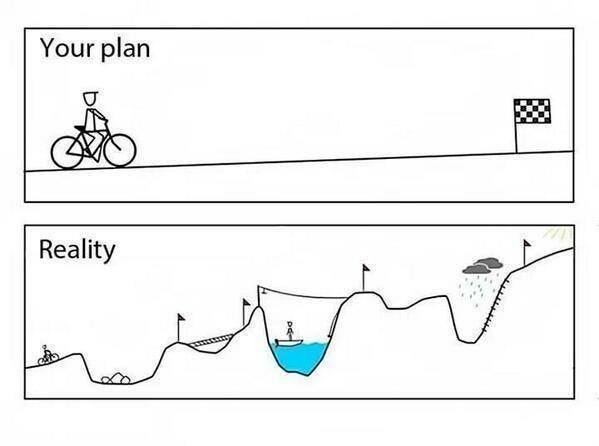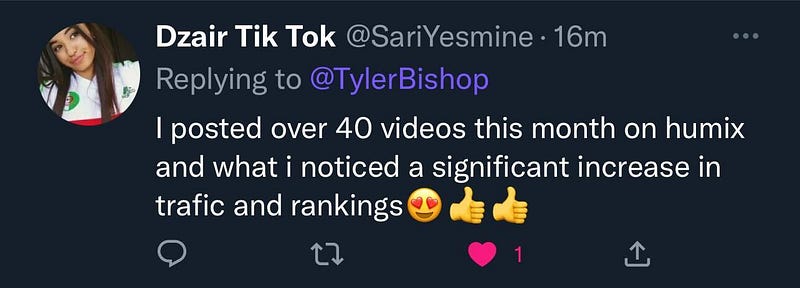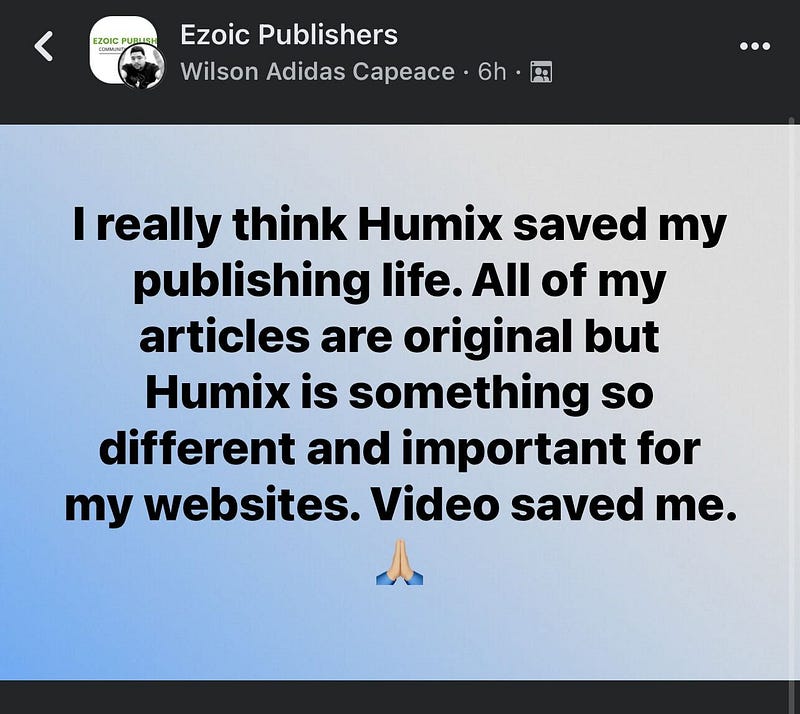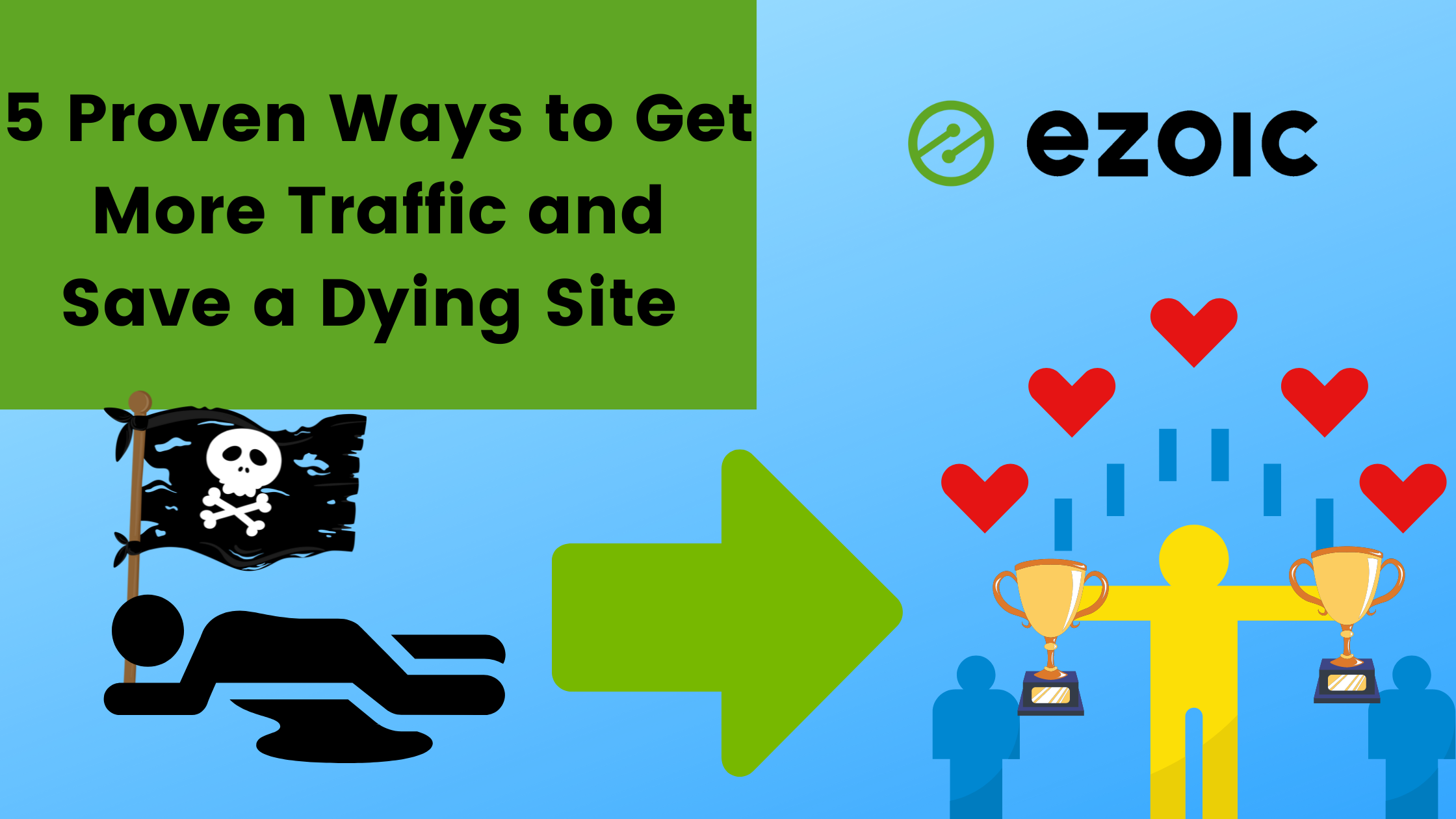Over the 10+ years I’ve spent being a publisher, I’ve had to change strategy many times. I’ve had great months and terrible months. I’ve made a ton of money and lost a ton of money. Sometimes things worked, sometimes they completely failed. Those “here’s how success actually happens!” memes like this one became less of a joke and started to make an eerie amount of sense over time:

Things change fast on the internet. A google update, a new trend, a social media traffic spike, a slow quarter…can all make or break entire sites. What worked last year — even last month — might not work today.
If your site has been on the decline, don’t panic. Traffic and revenue naturally rise and fall over time. There’s a famous scene in the iconic television show Mad Men where the owner of an umbrella company was worried that the unseasonably sunny weather would lead to enormous drops in company profits.
“There will be fat years, and there will be lean years. But it is going to rain,” responded marketing guru Don Draper.
If you’re currently in a lean month (or a lean year), there’s plenty of ways you can revitalize your site and turn things around. Here are five ways to get more traffic and save a dying site and turn it into a profitable, successful one.
1. Use Video
Video has become the most popular form of content on the internet. With the rise of fast-paced social media platforms like Instagram, Snapchat, and TikTok combined with the ever-decreasing attention spans and oversaturation of online content, there’s a reason 82% of global internet traffic will come from video.
If you’ve never really used video content before, this could be an incredible way to turn around your dying site and get more traffic through proven, trendy ways.
Fortunately, you don’t need to be a video editing wizard or a charming, charismatic, camera-ready influencer by tomorrow. Ezoic has several tools that help with this process, like our article-to-converter tool Flickify, and our versatile video tool Humix. As you can see, many Ezoic publishers have begun to see significant increases in traffic and revenue through these tools:


Tools don’t save sites; publishers do. But these tools can provide an enormous, dramatic shift in success when used correctly. As Forbes recently explained, “Videos get far more views and engagement than simple photo posts on social media. In fact, social video generates 1200% more shares than text and image content combined. And viewers retain 95% of a message when they watch it in a video compared to 10% when reading it in text.”
If you’re struggling to get more traffic to a site, then using video should absolutely be your next move — especially with tools like Flickify and Humix at your disposal. It’s a popular form of content, it works, and it’s easier than ever to create and promote when you combine Flickify and Humix together.
2. Teach Your Content
“We cannot direct the wind, but we can adjust the sails.” -Jimmy Dean
Sometimes, simply writing content is not enough to keep a struggling site afloat. As you’re learning and growing as a publisher, you may just need some other income streams as you’re figuring out content monetization and ad revenue.
That’s where teaching comes in. Odds are, you’re pretty knowledgeable about your topic; instead of writing more articles about it, perhaps it’s time to consider monetizing your knowledge through online courses or coaching programs.
When I first started out as a publisher, it was a long time before I made any ad revenue for my content. Creating a small online course that packaged my best articles and teachings really helped. For $27, anyone could buy my short online course: it had several articles, book recommendations, and four short videos I recorded on my cheap laptop in my apartment one week. I was able to make about one sale a day, which helped me stay afloat as I completely redesigned my site and content strategy.
There’s no one right way to do this. But in any case, the point here is simplicity: you can use your smartphone or webcam to record yourself teaching your topic, package it in an inexpensive or free online course, and promote it to all your traffic.
You could also choose to do a more personalized teaching approach, coaching. You can read more about it here, but here’s a simple structure how I got 40 coaching clients in 60 days:
Step 1: Create a 1-question survey asking your audience their #1 biggest problem in your niche. Be sure to ask for names and emails, too.
Step 2: Promote this survey and get as much of your audience to answer it as you can. Aim for at least 20–30 responses.
Step 3: Identify the most common response.
Step 4: Reach out to every person with that specific response and ask them some follow-up questions and find more information about that problem.
Step 5: Create a sales page offering to help people with that problem.

This strategy is great for several reasons. First, it gives you real insight and data into your audience’s needs. Even if you don’t get many coaching clients, you can still find useful and relevant data to create better content that could attract more visitors. It also provides you with a more personalized connection with your audience. And of course, it can provide you with a much-needed influx of revenue!
I charged $100 for a one-hour coaching call and a few weeks of email support to help my clients stick with the plan we made, and I was able to get over 40 people sign up in just under two months. You can also upsell other products of yours in the meantime. Over time, you can choose to raise your prices and be more selective with your time.
Teaching others through online courses or coaching programs not only can give you a quick revenue influx to get through slow months, it also helps inform you about the key issues your audience is facing every day. You can use this knowledge to create better, more helpful, and more useful content for your audience that can give you a real chance at building a bigger audience, appearing in more organic search results, and attracting more revenue.
3. Do More Market Research
As Ezoic CMO Tyler Bishop recently explained it, “You might think you’re sitting on a goldmine, but 95% of your audience might tell you otherwise if you listen. Nintendo almost went all-in on lewd and unusual trading cards. The Gap was a record store that happened to sell jeans on the side. Good thing these companies listened to their customers and audiences to make better business decisions!”
It’s easy to think you already know your audience; you’ve probably been creating content, reading books, watching videos, listening to podcasts, and researching about about your niche for years.
But while you may already be an expert at your topic, there’s always more to learn and more ways to deliver the right content in the right ways to your audience. Your audience might prefer to consume your content in different ways, too; some readers might prefer longform articles they can read over lunch, while others want a fast 30-second video they can watch while waiting in line for coffee. The more you can serve your diverse audience, the more likely it’ll be to attract more traffic to your site.
Fortunately, there are plenty of ways to conduct market research and find better ways to reach your audience. First, we’d recommend you take a look at your site data through Ezoic’s Big Data Analytics tool, and see what content categories perform best, what devices most of your readers are on, what social media platforms thdemajority of your traffic uses, etc. This can give you crucial insights into what topics, article lengths, social media platforms, posting frequency, and myriad other pieces of data that can give you information about how to build a successful content strategy.
It may feel like your audience just isn’t clicking on your content. While that may be true at the moment, you can always change that by delivering better, more researched, and more nuanced content to your readers that you know they’ll want to read.
4. Get Traffic From Social Media
For a long time, I didn’t realize that the majority of my audience was very active on Facebook and Twitter. For months, I was getting decent traffic; I had no idea my audience was sharing my content on those platforms. I wasn’t even on Facebook or Twitter!
I once heard a best-selling author and writer say that trying to start a blog was a bit like opening a fast food restaurant in the middle of nowhere; there’s not a lot of foot traffic and it’s hard to get people in the door. But using social media and big online publications, he said, was a bit like opening a fast food restaurant in the food court of a crowded mall: everyone’s already there!
If you’re having a hard time getting traffic to your site, perhaps try social media for a bit. This can give your site some residual traffic and teach you more about what content works, and what doesn’t.
It can be far easier to create an active community on social media, as well. For instance: I started a private Facebook group and began inviting people with similar interests to my group. In just a few months, I had a very active group with over 1,600 new members! I could share my site’s content, ask for feedback, survey/poll members, invite them to join my email list, even sell my products directly to them.
If your site is dying and isn’t getting enough traffic, it’s time to look at things differently. Use social media to your advantage and get some new activity and knowledge from these groups in a matter of weeks.
5. Build an Email List
Speaking of email lists, an active email subscriber base can become the lifeblood of your site. Over about three years, I built an email list of over 125,000+ new subscribers. If my organic traffic began to go down, it was alright — I could survive the slow months because I had a built-in audience I could count on to read my articles.
As digital marketing agency Maropost put it, “Though search engines do not crawl or index the emails we send, email marketing boosts the website’s ranking by encouraging beneficial user behavior like sharing, commenting, liking, and exploring other website pages. Such positive user behavior improves your website ranking on Google search results.” This means that if you have an active email list, you’ll automatically get more traffic to your site, activity which Google will recognize and keep in mind as they show content in search engines.
If you’re not getting a lot of organic traffic, you can always help the process by bringing in more reliable traffic directly from email lists. Even a small list with a few hundred addresses can make a difference, especially just by showing you what content performs better than others. For a long time, all I did was double-down on my best-performing content because, for some reason, it was working. An email list can show you this faster, and help Google consider your content more based on your traffic from your subscribers.
In Conclusion
A dying site is not a dead site. Search Engine Journal recently noted that over 50% of business websites receive less than 500 views per month! The truth is, most sites experience highs and lows on a monthly or even weekly basis. It’s not necessarily your fault, either! Seasonal trends, Google algorithms, market downturns, and countless other factors outside your control have a huge impact on your site.
Still, there are plenty of ways you can improve your site and get more traffic to a struggling site. Perhaps your writing skills could use some work. Or maybe if you wrote about different topics. Have you tried shortening/lengthening your articles? Have you considered using video content on your site? Are you on social media?
The answer is probably a combination of these answers and others. As the old saying goes, “what got you here won’t get you there.” Reaching a new level and elevating your site’s traffic may depend on you simply learning more, bravely attempting experiments and learning from your mistakes to you become a better publisher.


